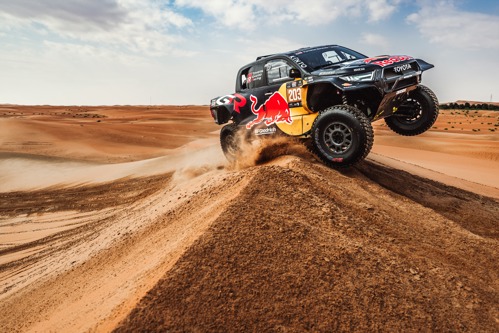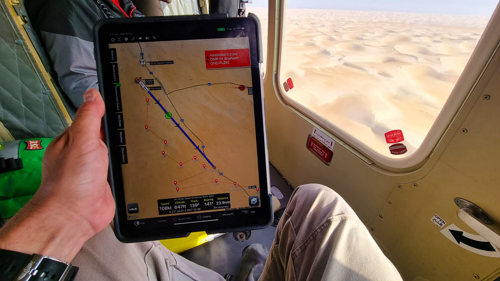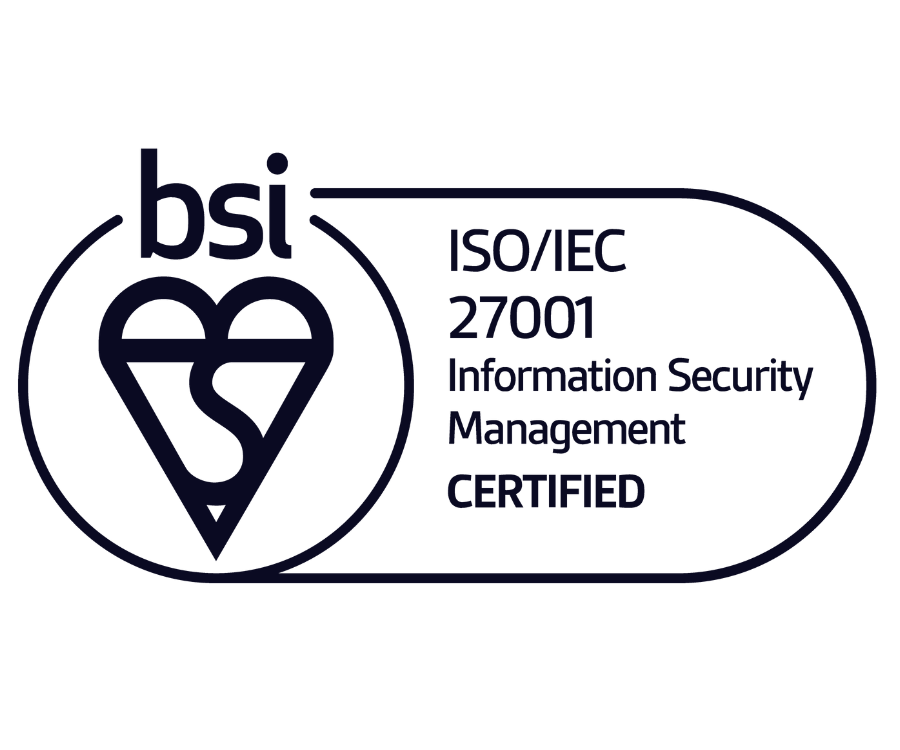
Desert Race Rescue: Command and Control
25 March 2024High-Speed Hazards in the Abu Dhabi Desert Challenge
Racing at high speed through the open desert, competitors in the Abu Dhabi Desert Challenge are never far from a potential incident. But thanks to Dr Sean Petherbridge and his team, help is only ever a few minutes away.
Rub’ al Khali - ‘The Empty Quarter’. The name tells you everything you need to know about the desert that stretches across parts of Oman, Yemen, Saudi Arabia and the United Arab Emirates. It famously stood in as the desolate planet Arrakis in the recent Dune films, but for much longer it’s been known as the venue of one of the oldest cross-country rallies in the world; the Abu Dhabi Desert Challenge.
The Challenge: Racing Without GPS
The Abu Dhabi Desert Challenge forms the second round of the World Rally-Raid Championship, taking place just a few weeks after round one, the world-famous Dakar rally.
Contestants race motorbikes, quads and 4x4s of various levels of modification across the desert with no GPS and only pictographic notes to guide them around stages between 200 and 300km. The race totals over 2000km and takes place over 5 days.
It is a gruelling challenge for both the machines and the contestants, with each having to pick their route through the sand, rocks and dunes which can rise up to 800 feet. Choose the wrong spot to crest a dune and the sand will give way, flowing like water and stranding the vehicle. Misjudge your speed though, and that same sand is suddenly rock solid, as one team found out this year when their 4x4 leapt over a dune straight into the slope of another, the driver suffering a spinal compression injury.

Being stranded in the middle of the desert with a serious injury is bad enough, but the fact that another high-powered 4x4 might come flying over the top of the same dune at any moment adds even more urgency. Help seems a long way away.
“We can't drive ambulances in the desert,” explained Dr Sean Petherbridge, the Chief Medical Officer for the Emirates Motorsports Organisation (EMSO), who are the governing body for motorsport in the UAE and organisers of the Abu Dhabi Desert Challenge. “We can put medics on 4x4s, but they take an age to get there and it's risky.”
Search and Rescue Operations: Air Support Coordination
It is for this reason that every year, Dr. Petherbridge and EMSO establish a helicopter Search And Rescue (SAR) operation specifically to support the Abu Dhabi Desert Challenge. With aircraft chartered from Abu Dhabi Aviation and with support from the Abu Dhabi Police Air Wing, the EMSO SAR team coordinate everything they need to provide airborne Search and Rescue for the competitors as they race across the open desert.
“We get Bell 412 [helicopters] with a stretcher and seats,” explained Petherbridge. “We put the right people and the right equipment on board, and we have a flying ambulance.”

It’s as much of a logistical challenge as it is technical. Fuel sites and landing areas need to be constructed in the desert, and then constantly moved to keep up with the constant flow of competitors through the stages. It’s all coordinated from Rally Control. The vehicles are equipped with trackers that report their position every three minutes and alert Rally Control if there is an emergency that they need to respond to.
“As the competitors move, we move the rescue aircraft around the desert so that they’re close to any accident that happens,” said Petherbridge. “99% of what we see is broken ribs or vertebrae, or long bone fractures. They can all go to a local hospital close to the route but major burns or people who need neurosurgery, we will fly to the main trauma centre in Abu Dhabi, and that will be a three hour turn-round because the aircraft will be out of fuel when it gets there.”
Technological Edge: Airbox ACANS in Action
The Search and Rescue role requires rapid-response and precise navigation over the desert. The pilots need to know not only where they are themselves, but also the quickest route to the accident and the direction and distance to the medical facility best suited to treat the injury.
For this reason, both Rally Control and the aircraft are equipped with Airbox ACANS, allowing Petherbridge to track the aircraft every second, giving him a ‘top-down’ view of their position in real-time, as well as giving the crews in the aircraft a moving map with the positions of the other aircraft also being constantly updated.
“We had four [ACANS] units, one in each aircraft and one for command which worked really well,” said Petherbridge. “I could just click and drag to give the crew a vector, so I could tell them immediately ‘head 137 degrees’ and they are halfway there in the right direction before I get the exact position of the competitor from their tracking system.”
When the inevitable does happen, the response in the aircraft is just as slick and well-drilled. Marc Hurley is the SAR Chief for the Abu Dhabi Desert Challenge. As well as ensuring the rescue crew are trained to the high standards required, he also flies as a SAR crewman himself on one of the aircraft.
“Normally, we will get an alert over the radio and rally control will pass a rough heading to get us going in the right direction,” he explained. “But the other way we did it was with the alarm on Airbox, and as everyone’s Airbox picture comes through straight away, you can just tap it and get a vector straight there.”

Continuous Coordination: The Critical Role of Dr James McBride
With the helicopter on the way to the hospital, Rally Control’s job is far from over. Dr James McBride is the Chief Medical Officer for the Abu Dhabi Desert Challenge and plays a critical role coordinating between the aircraft and the hospital. The real-time picture provided by ACANS allows for a seamless handover with the medics receiving the casualty, while also offloading this duty from the crew in the aircraft.
“I can see where the aircraft is, and I can phone the hospital and tell them that the helicopter is ten minutes out,” said McBride. “We've got medics working on patients and doing their thing. And the last thing they need is garbled messages on the radio, which is really nothing to do with their situation.”
At one point, with all three SAR aircraft tasked at the same time, it was the real-time picture from ACANS that allowed Petherbridge in Rally Control to keep them operating safely , while also getting the aircraft airborne as quickly as possible.
“I was able to see the second an aircraft had put down, and I could lift the other one up,” he explained. “So, it saved us time and added significantly to safety, in particular when it comes to deconflicting aircraft in the same space.”
With ten SAR missions across the five-day event, 2024’s event might seem busy, but Petherbridge described the tempo as “about average.”
“We are running a busy search and rescue operation for five days in the middle of a desert,” he said. “Logistically, we need this level of sophistication and Airbox does it brilliantly.”
Check back for Desert Race Rescue Part 2: ‘The Racing Line,’ where we examine how the crews handle the hazards of rescues on the racing course, and what happens when an aircraft unexpectedly goes out of action.
For enquiries, please contact marketing@airboxsystems.com





